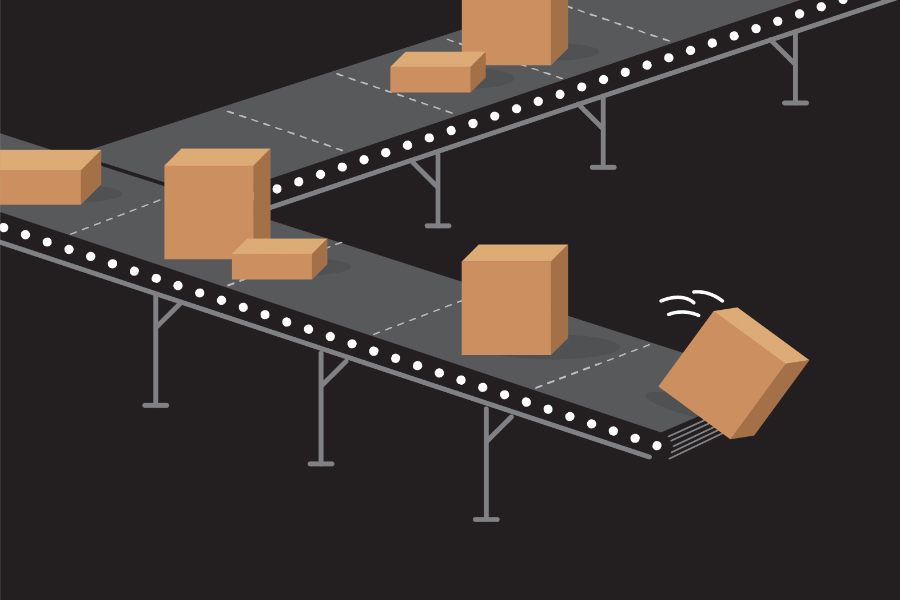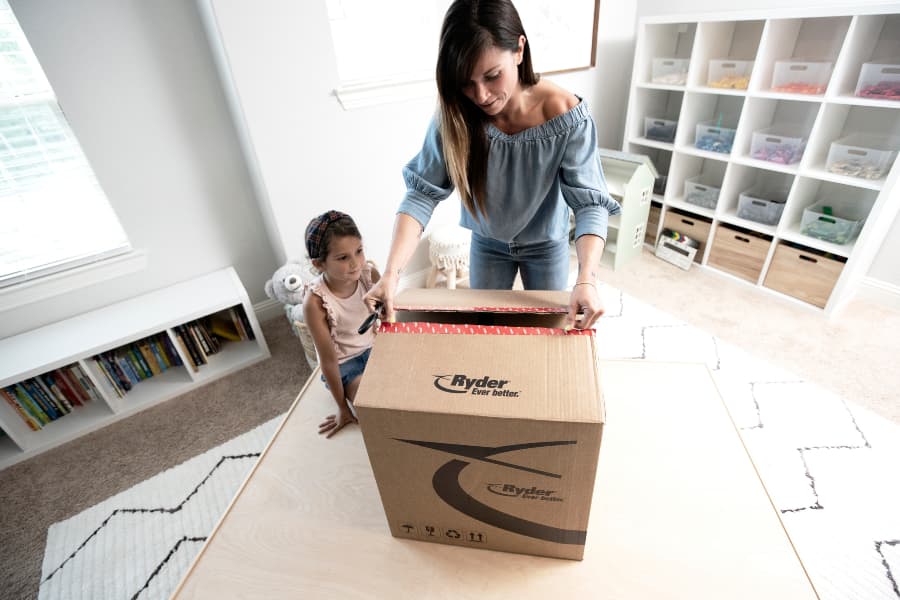[Updated post from April 27, 2022]
As e-commerce ramped up during the pandemic, brands made an unprecedented shift away from wholesale retail partners.
With millions of consumers now working and studying from home, it made sense to focus on bringing their offerings into people's lives via social media, shopping apps, and e-commerce websites, rather than physical store partners that consumers were no longer visiting.
The result? The stratospheric growth of direct-to-consumer e-commerce. Over the past few years, e-commerce sales have soared higher than ever - with no signs of stopping. Even with pandemic stay-at-home orders now in the rearview mirror, 2022 D2C e-commerce pulled in upwards of $1 trillion - 14.6% of total retail sales.
But even with the exponential growth of e-commerce, brands may find themselves in a pickle if they completely neglect wholesale retail. While wholesale may be more difficult in terms of maintaining profit margins and ensuring a consistent brand experience, it's essential for a sustainable business model.
Why? Because a hybrid retail strategy will always retain more revenue in the long run. Consumers are always going to be visiting brick and mortar stores. We've seen this resilience even after a global pandemic that halted foot traffic. Brands that have a physical presence via retail partners will have a greater brand reach, more opportunities for sales, and direct access to already-engaged customers.
Is the golden age of direct to consumer retail already over?
Coca-Cola, Nike, Crocs, and Yeti are just some of the brands that have been transitioning over to D2C selling over the past few years. After cutting ties with major wholesale partners including Amazon and Macy's, Nike set an ambitious target to generate 30% of its sales via direct channels by 2023. They exceeded this goal in 2020. And in 2022, D2C sales reached $5.4 billion, up 16% from 2021.
Nike's success in ‘going it alone' seemed to herald a new era of retail, where legacy department stores and marketplaces no longer held the keys to the castle. But this isn't quite the full story. In fact, forecasts are showing that the boom of direct selling may already be coming to an end.
Between 2022 and 2025, annual growth rates for e-commerce sales in the US are expected to increase only about 11%, more in line with pre-pandemic rates and not anywhere close to the 45% growth of 2020 – a clear sign that a D2C-reliant approach may carry some risk moving forward.
With an unpredictable economic climate, brands who stick to only one selling channel will spend more time, energy, and money on customer acquisition, operational costs, and shipping costs. According to the NRF, for every $1 billion in sales, retailers will see $166 million in returns where they're offering free shipping and returns for a seamless experience.
While it was predicted that the DTC movement would shift consumer behavior altogether, the industry isn't seeing this in the post-pandemic world. According to a survey by McKinsey, in-store spending had an 8% year-over-year growth in March 2022, compared to 5% in 2021.
In the same survey, a whopping 75% of consumers said that they're purchasing products both online and in physical stores. For retailers, it's clear that having brick-and-mortar experience to complement online experiences is the new normal in 2023. Brands who aren't beginning to explore an omnichannel approach could hurt their chances of maintaining a healthy business and a strong community.
The challenge of relying solely on online orders
It's hard to achieve profitability
Pursuing greater profitability has been one of the biggest motivators for brands choosing to become direct sellers. It's easy to assume that cutting out the middlemen will result in brands pocketing a bigger share of the pie, but research is showing that in many cases, the opposite is true.
According to an analysis by BMO Capital Markets that examined over 20 brands including Nike, Canada Goose, and Urban Outfitters, wholesale channels are actually resulting in better profitability than direct-to-consumer channels.
Yes, you read that right!
Even though D2C retail offers brands undeniable advantages like better capture of customer data, higher revenue per item, and more control over branding, this has to be weighed up against higher operating costs in the form of storefronts, direct-to-consumer order fulfillment, and customer acquisition.
The result, according to BMO, is that the gains of larger profit margins are ultimately lost. For example, they found that American Eagle and Gap's margins ended up being below that of Ralph Lauren and PVH, who rely heavily on wholesale selling.
The takeaway? Brands, especially those who are trying to scale, should never assume that D2C e-commerce automatically provides a pathway to bigger profits.
Consumers returning to in-store shopping
E-commerce's rapid growth during 2020 and 2021 was primarily driven by stay-at-home orders and public health restrictions aiming to contain the spread of COVID-19. With an unprecedented number of shoppers moving online, commentators were quick to predict that these newfound habits were going to stick as the pandemic progressed.
This was backed up by the number of consumers continuing to work remotely and shifting out of downtown areas. But with a few years of vaccines and booster shots now widely rolled out, signs are showing that brick and mortar is mounting a steady recovery.
March 2022 saw e-commerce sales decline 3.3% from the same period a year prior, while in-store retail sales rose by 11.2% – the first time since the onset of the pandemic. Not only this, it's predicted that three-quarters of US sales will happen offline in 2023.
Major retailers, including Macy's and Best Buy, are also seeing the proportion of sales coming from online direct sources dropping compared to previous years.
This corresponding rise and fall in brick and mortar and e-commerce's fortunes reflects how consumers are feeling more comfortable venturing into stores. It also shows that despite the convenience of shopping online, the allure of getting to discover and browse products in real life is proving tough for digitally-native brands to compete with.
As recovery out of the acute phase of the pandemic gathers pace, consumers are seeking to find a balance between in-store shopping and buying online. In sum, a diversified selling strategy that embraces both direct and wholesale is your best bet to capture this omnichannel audience.
Growing customer acquisition costs
D2C e-commerce brands have a distinct advantage over brick and mortar in the early days. They have access to millions of potential customers across social platforms where they can build brand recognition – without the high overheads that come with running a physical store.
However, this early advantage quickly dissipates once brands have been in the marketplace for a few years. The hard truth is that maintaining such a high rate of growth is expensive and unsustainable in a highly competitive digital landscape.
When easy digital growth opportunities exhausted, brands need to pursue a shift in sales strategy to achieve profitability and continue building brand awareness.
What wholesale selling offers D2C brands
Trusted retail partners
Trust is the key to any successful consumer business. Customers purchase products over and over again from brands and stores that they trust. If a customer has had only positive experiences at a big-name department store like Macy's or Nordstrom, they're much more likely to visit the store and trust that the brands presented are quality.
For omnichannel brands, having a presence within retail partners means they're exposed to an entirely new community of loyal customers. The results? Higher foot traffic, increased sales, and more opportunities to connect with potential customers.
A memorable brick and mortar experience
In an entirely saturated retail environment, e-commerce brands need to find a way to stand out from the crowd. Otherwise, they could get completely lost in the shuffle and miss opportunities for building a community of brand advocates.
One way to do this? Provide in-person experiences. Whether brands are partnering with larger department stores or small boutiques, that in-person connection could be the thing that, from a consumer's perspective, sets one brand apart from the others.
More brand awareness
In a wholesale environment, there's always going to be consumers who may have not found their way to your brand on their own. Maybe they're not product searching online or via social media. Maybe they prefer checking out each aisle and feeling products before purchasing. Whatever the case is, DTC companies who have retail locations and retail partners have a higher chance of reaching new audiences.
Plus, partnering with department stores brings smaller brands more opportunities for collaborative marketing efforts like being featured in the store's commercials, social media, brochures, and more.
Easier to scale
Direct-to-consumer e-commerce has widely been thought of as a scaling machine. Simply build a needed product, put it out into the world, and the consumers will flock to buy said product - right? Not quite. With the incredible number of costs that e-commerce brands have to tackle just to get their inventory out the door, it's no wonder some of these brands are exploring wholesale.
Within a wholesale model, some of the pressure is actually taken off of the D2C brand in a sense that the retail partner will sell and store the product. Plus, they'll market the product simply by having it available in their curation.
D2C brands that are pivoting to wholesale sales
Glossier
Founded in 2014 when Emily Weiss had an 'aha' moment to turn her beauty blog into a brand, Glossier quickly became the 'it' direct-t0-consumer beauty business. Focusing on that 'no make-up, make-up' look and "real people" campaigns, the brand value surpassed $1 billion in just 5 years.
Glossier has historically maintained a strictly DTC approach, with mysterious pop-up shops and limited brick-and-mortar stores as the only alternative to buying products directly through their site. However, with changing consumer demand, the brand recently decided to shift its focus from direct-to-consumer only, taking a more omnichannel approach.
Why? Even with a strong DTC following, the past few years have been just as volatile for Glossier as they've been for every other retailer. The pandemic caused its brick-and-mortar stores to close, resulting in lay-offs of in-store employees. In the past year, the brand also laid off one third of its workforce in order to focus on scaling its core makeup line.
This means that the beauty brand will need to begin meeting its customers where they are, rather than keeping everything under their website. Glossier is not only opening its doors in major cities across the US, the once online-only products can now be found at Sephora stores in the US and Canada.
The results? Increased foot traffic, engagement from Sephora customers, and more sales.
Allbirds
Founded in 2016, Allbirds' minimalistic, eco-friendly approach has caught the likes of Leonardo DiCaprio, who has invested in the company due to its sustainability initiatives. Like many direct-to-consumer brands, they've historically sold products online and in their own brick-and-mortar stores, creating a strong community of brand advocates along the way.
However, after going public in 2021, the brand began to shift its strategy to a larger omnichannel with the hopes of attaining higher profitability and elevated brand awareness. To do this, they doubled their physical footprint, opening 35 stores globally. Additionally, they've begun to step into the wholesale channel. In 2023, Allbirds' wholesale partners include companies like Nordstrom, Public Lands, and (most recently) REI.
The change proved to be successful, with CEO Joey Zwillinger noting that their omnichannel customers spent 1.5 times more than customers shopping through a singular channel.
Casper
Another 2014-founded e-commerce brand, Casper made waves in the mattress industry with its direct-to-consumer, customer-first approach. Where mattresses were typically found only in department stores, Casper took an old-school product and made it 'new' again. With celebrities like Kylie Jenner posting the brand on Instagram, Casper soared to near-instant fame and successfully made buying mattresses online popular.
But, like most retailers over the past few years, the brand experienced a decline in DTC sales and had to lay 21% of its staff off after closing European offices. To combat the e-commerce lull Casper began expanding its distribution channels to wholesale in line with increased foot-traffic. The popular mattress brand has over 20 existing retail partners like Nordstrom, Sam's Club, Ashley HomeStore, and more.
With a focus on both offline and online shopping, Casper's net loss declined significantly in 2021, sitting at $21.2 million compared to 34.5 million in 2020. While Casper has maintained its omnichannel approach in 2023, the brand's new motto is simple: focus on being a mattress retailer only, rather than trying to become the 'Nike of the sleep economy.'
The verdict: A hybrid business model is the pathway to success
D2C e-commerce fulfillment definitely has its perks for the brands who are investing in it wisely, as shown by the success of brands like Nike and Glossier. Direct selling enables merchants to create one source of truth across their marketing and selling channels, while also having a direct line with customers to stay in touch with what their audience wants.
But there are also plenty of stories out there about the struggle to become profitable and maintain growth when online audiences max out. For brands who are still in the process of establishing recognition with audiences, choosing a D2C-only model is unlikely to pay off over the long term.
Well-chosen wholesale partners who share your brand's vision can help you to scale your business effectively and give you access to a much larger pool of customers. Moreover, being able to leverage an established logistics network enables you to leapfrog the traditional growing pains of being a fast-growing e-commerce business, such as keeping pace with demand and ensuring fast delivery timeframes.
As increasing numbers of consumers pivot back to in-store shopping, having a presence at a well-known retailer in addition to direct selling channels gives you a major advantage over online-only competitors. Hybrid retail models give you the flexibility to capitalize on evolving consumer habits while putting your products in more places. What's not to love?




